Marriage was never just about love. For much of history, it was about land, lineage, livestock, and legacy. But something dramatic happened in the last century that forever altered the architecture of romance: contraception and the rise of the nuclear family.
The pill liberated bodies, and the mortgage captured them again.
Marriage 1.0: A Pre-Modern Partnership of Necessity
Before the industrial age, marriage was less of a romantic covenant and more of a survival pact. It wasn’t about butterflies; it was about bread.
- Women provided heirs and home.
- Men provided protection and provision.
- The community ensured conformity.
There was little question of permanence — marriage was forever because options were non-existent.
Then Came the Pill: Love Without Labor
The sexual revolution of the 1960s was turbocharged by a tiny invention: the contraceptive pill.
Suddenly, sex didn’t mean babies.
For women, this was an unprecedented shift — a move from biological liability to sexual autonomy. The fundamental equation of marriage — sex = kids = family — was severed.
What followed was a seismic change:
- Sex became about connection, not reproduction.
- Love became about choice, not compulsion.
- Marriage became a deferred decision, not a default one.
Enter the Nuclear Family: Isolation with Curtains
As industrial capitalism moved people into cities and away from extended families, the nuclear family became the idealized domestic unit: one man, one woman, two kids, and a washing machine.
But this new structure did something unexpected: it privatized romance.
- It placed enormous pressure on one relationship to fulfil every need — emotional, sexual, economic, and psychological.
- It eliminated communal caregiving and outsourced joy to weekends.
- It created a system where partners were co-workers in the business of life, rather than explorers in the art of love.
Permanence In Marriage Became a Feature — and a Bug
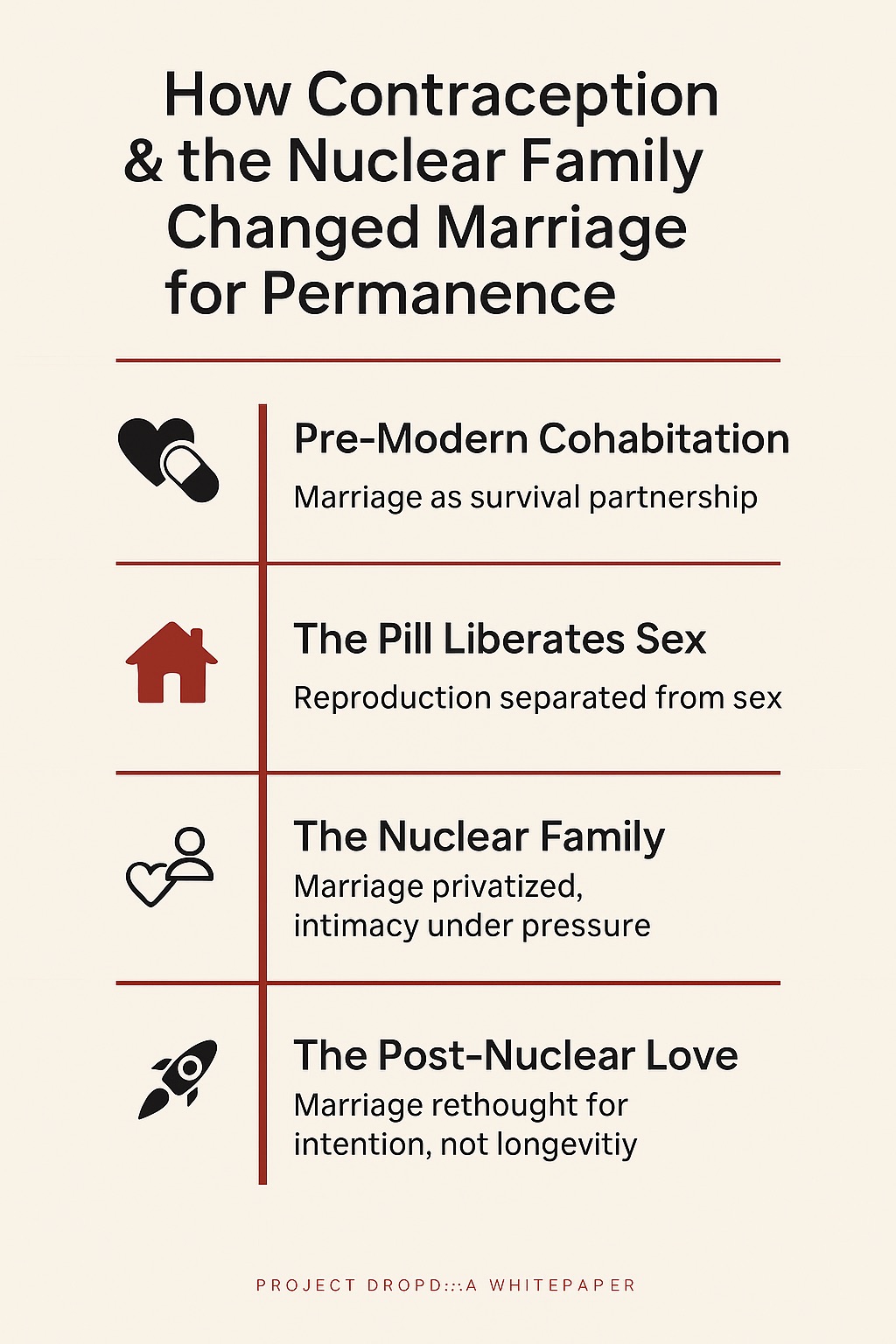
With contraception freeing sex from reproduction, and the nuclear family requiring two stable incomes, marriage became a tool for financial planning more than passionate companionship.
But the promise of permanence — “till death do us part” — began to crack:
- Divorce rates climbed.
- Marital satisfaction declined.
- Sexless marriages became normalized (nearly half in Japan, and rising globally).
As people live longer and work harder, lifelong monogamy began to feel less like romance and more like an EMI plan with legal binding.
The Great Disconnect
Ironically, while contraception empowered individuals, it also revealed the fragility of our inherited relationship systems. Once freed from biological dependence, people began to ask:
Why stay in a joyless marriage when you can choose freedom?
But without a robust alternative — without new communal structures for connection — many fell into a vacuum: either serial dating or isolated living.
Rethinking Permanence
What if permanence isn’t the point?
What if relationships, like people, evolve — and our social systems should allow space for that evolution?
What if instead of chaining love to longevity, we created bonds based on intention, mutual growth, and emotional nourishment, with room to renegotiate, not just endure?
Final Thought: Love Is Not a Mortgage
Contraception gave us freedom. The nuclear family took some of it back.
Now we stand at a cultural inflection point.
Will we continue to force permanence into love’s blueprint?
Or will we imagine post-nuclear models of companionship — fluid, shared, and rooted in connection over control?
Because maybe love, like life, isn’t meant to be locked in —
Maybe it’s meant to be lived in, with doors open to change.
Join DropD Network

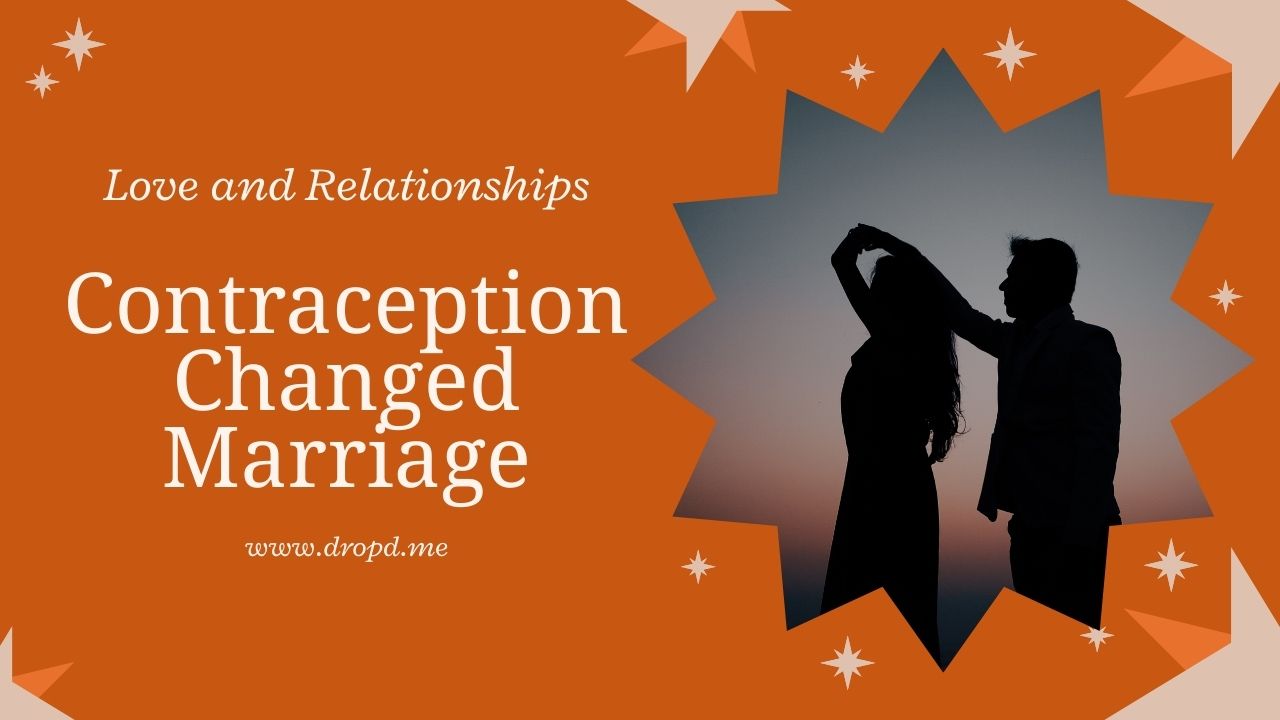
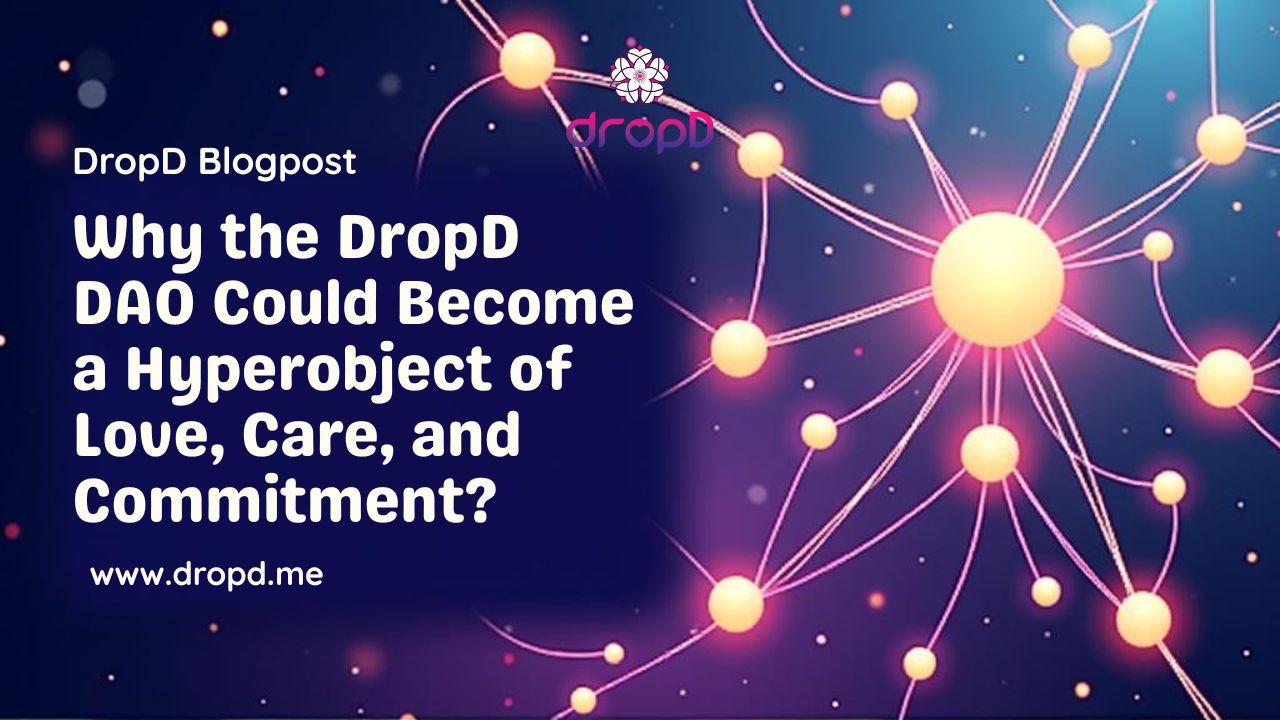
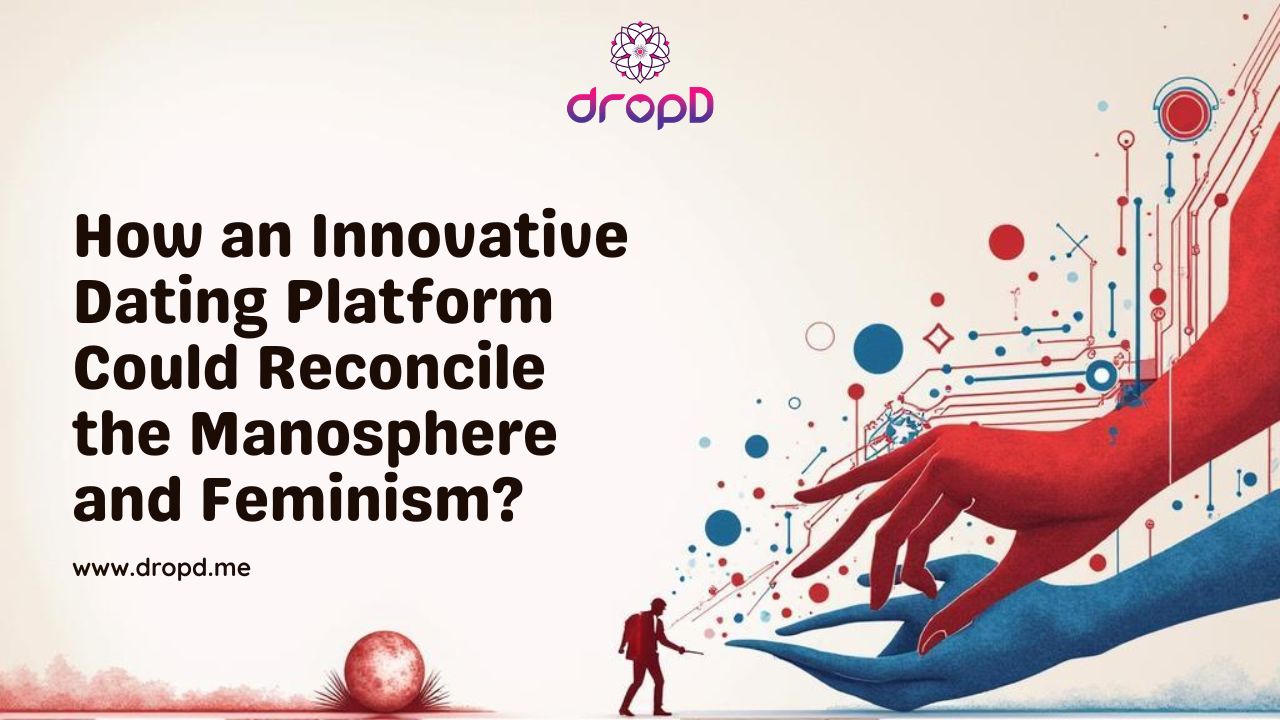
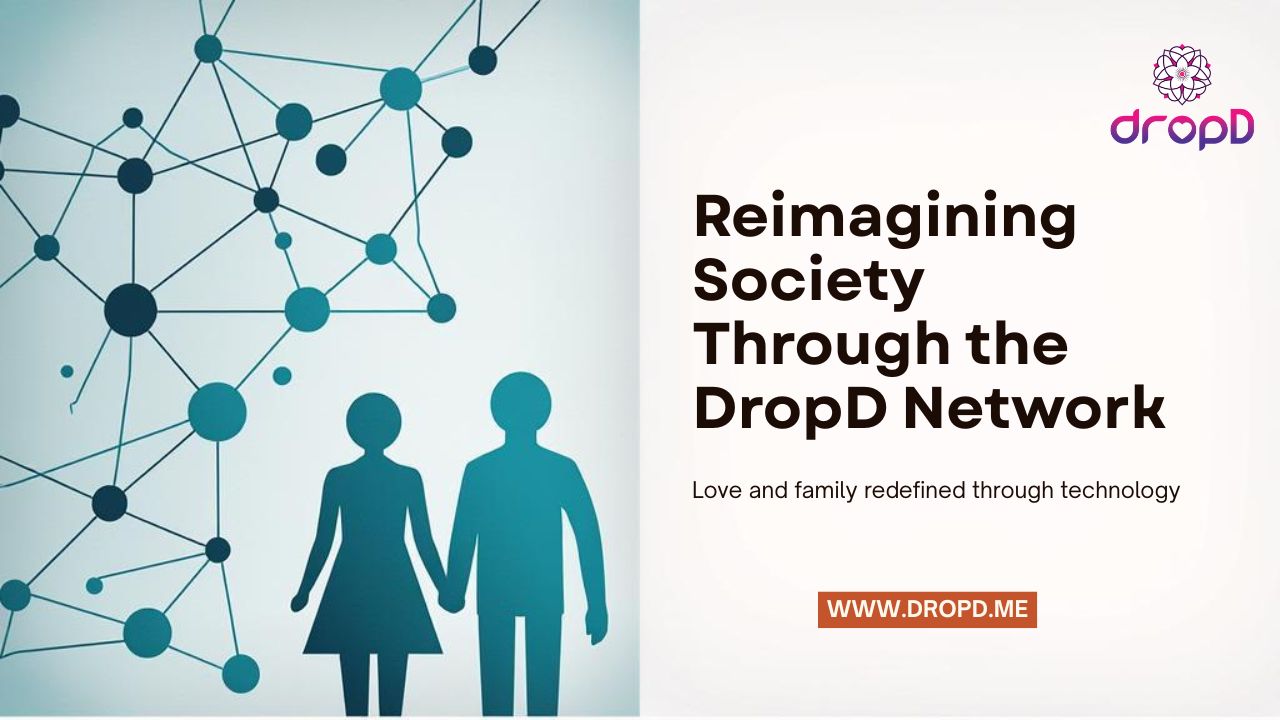

Leave A Comment